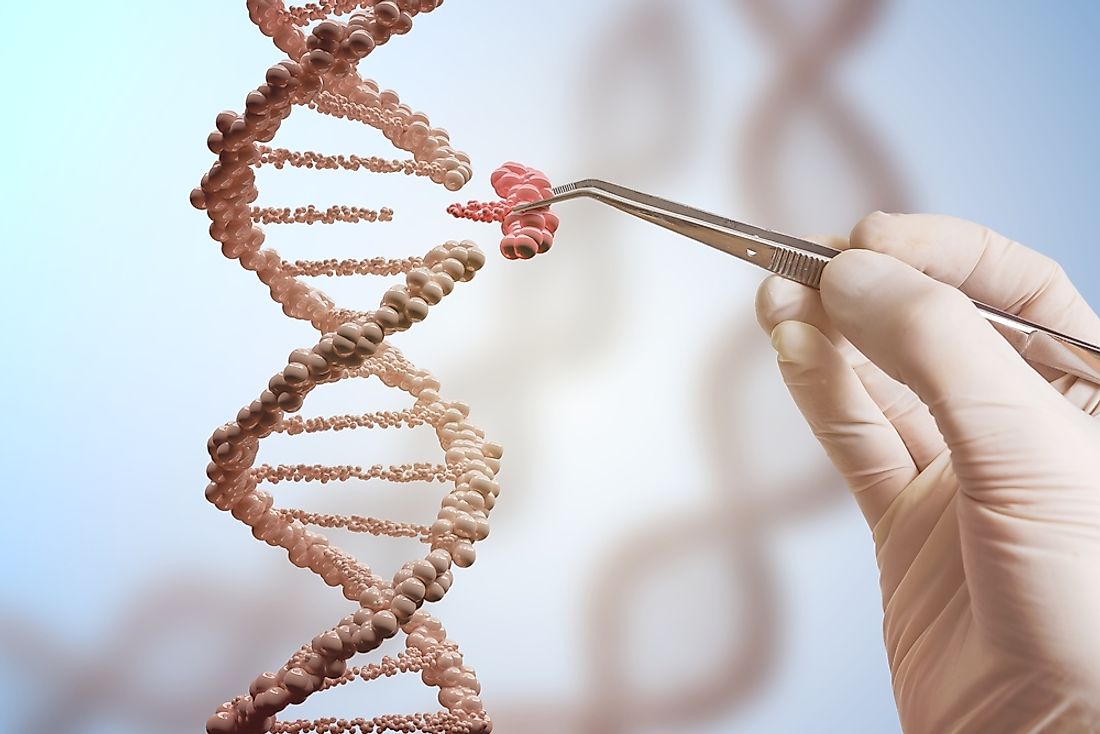What Is Genetic Modification?

Genetic modification, also referred to as genetic engineering, refers to the process of changing the DNA of a living organism with the aim of altering its characteristics. Unlike traditional breeding in animals and plants, genetic modification involves inserting a gene from one organism into another. Organisms that undergo this manipulation of genes are referred to as Genetically Modified Organisms (GMO). Genetic modification has been used on various organisms to improve their characteristics. For example, it is done in plants to yield more produce and in animals to get more efficient breeds.
How Genetic Modification Works?
Genetic modification involves a multistage process to get to the GMO. It starts with identification of the gene, where the genetic engineers need to determine the desired outcome of what they need to modify. They then select a suitable gene to replicate the desired characteristics of the host organism. The second stage is isolating the gene, and this can be done using restriction enzymes. The DNA is cut into segments and undergoes litigation into a plasmid which is embedded into a bacterium. The next stage is cloning, where the gene is replicated several times, usually resulting in thousands of genes. This is done through splitting the DNA and pairing it with relevant chemicals. The DNA is then inserted into the cells through microinjection in animals whereas in plants this is done using Agrobacterium-mediated recombination. The organism to be modified is regenerated from the cell that was modified since only that single cell was altered. The last stage is screening of transformed cells, which is done to confirm the procedure produces desired results and that the new gene is present in the modified organism. Tests are carried out to ensure that the inserted gene is in the right location and the right number of chromosomes. This stage involves various tests to ensure the effectiveness of the modification.
Application Of Genetic Modification
Genetic modification has four major applications applications which are medicine, agriculture, industry, and research. In the field of medicine it is applicable in drug manufacture and production of vaccines. Hormones such as insulin can be cloned in large quantities to help in managing diabetes. Growth hormone has also been altered to make people look younger as well as gain more hair through the generation of follicle stimulating hormones. The most prominent application came through the success of pig to human organ transplant. This has been done using organs from genetically engineered pigs. More human organs are being grown through these modified pigs to aid in transplants.
Regulation Of Genetic Modification
Genetic engineering is delicate concept and it is be regulated because it may lead to harmful effects if not checked. Some guidelines have been recommended to assess and manage risks that come with genetic modification. Regulations vary from country to country, while some countries ban and restrict the use of genetically modified organisms. There are also countries that have welcomed GMOs though only allow minimal usage. Around 150 countries worldwide are members of a protocol called The Cartagena Protocol on Biosafety. This protocol governs everything touching on GMOs.
Controversies
There have been several criticisms on genetic modification. Many critics object the use of GMOs because of the impact they could have on the environment. Some religious opinions claim that genetic modification is “playing God” and messing with how things were meant to be. There have been concerns about the consumption of genetically modified food. The concern is mainly on whether the genes can transfer to human cells and alter characteristics in people, and this requires that genetically modified foods be tested thoroughly before they are produced for human consumption.











